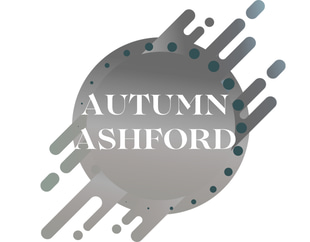Into the Woods: The Satisfaction of a Good Woodsy Mystery
Discover why readers love a good woodsy mystery and yearn for more.
MYSTERY
Autumn Ashford
7/1/20255 min read


By Literary Collective
There’s a particular kind of satisfaction that comes from reading a woodsy mystery—those stories that pull us deep into forests thick with pine and secrets, where the scent of moss seems to rise off the pages and every snapping twig hints at danger. It’s a genre niche all its own, though it crosses borders with crime fiction, psychological thrillers, and even the occasional touch of gothic horror. And for us here at Literary Collective, it’s one of the richest reading experiences out there.
But why is that? Why do we keep coming back to the woods—again and again, in story after story? Why do mysteries set against these shadowed, green-cathedral backdrops grip us so completely?
Let’s wander the trail together and explore what makes a woodsy mystery so irresistible.
First and foremost, the setting.
There’s something primal about forests. They’re ancient. They were here before us, and they’ll be here long after. They hum with life—but also with silence. Even the most seasoned hiker knows that a forest can shift in mood quickly. Sun-dappled one moment; ominous the next.
In a woodsy mystery, the setting becomes almost another character. The forest hides things. Evidence, bodies, clues—and truths about the people who enter its depths. Whether it’s the towering redwoods of Northern California, the mist-draped pines of the Pacific Northwest, the birch woods of New England, or the dense hollers of Appalachia, these spaces are inherently atmospheric.
And atmosphere is half the battle in crafting a compelling mystery.
In today’s fast-paced, hyper-digital world, the idea of slipping away into the wilderness is deeply appealing. When we read a woodsy mystery, we are transported—far from our cities, phones, and endless to-do lists.
But the forest isn’t a simple escape. It asks something of us. It requires attention. We listen for small sounds—a branch creaking underfoot, an owl calling in the distance. We become attuned to subtle shifts in the air, the light, the landscape. In this way, reading a well-crafted woodsy mystery is an immersive sensory experience.
It pulls us into the story, into a place where every shadow might conceal something unexpected.
Another key element is isolation.
Mysteries thrive on it. In many of the best woodsy mysteries, the protagonist is alone or cut off from the world—whether geographically, emotionally, or both. Maybe they’ve returned to their hometown after years away. Maybe they’re a forest ranger or wildlife biologist stationed far from civilization. Maybe they’re an amateur sleuth whose curiosity leads them where it shouldn’t.
Whatever the case, the woods emphasize their solitude. There are no crowds to blend into. No quick call to law enforcement. Help is far away—and the danger is very near.
That’s delicious tension for a mystery reader. Every footstep matters. Every decision has consequences.
Great woodsy mysteries often use nature thematically. The wilderness mirrors the characters’ inner states.
A protagonist grieving a loss might find themselves lost in the forest—both literally and emotionally. A villain hiding their crimes might choose the woods because they believe they understand its secrets. The cycles of life and death in nature reflect the moral complexities of human behavior.
In short: the forest isn’t just a setting; it’s a symbol. It offers shelter, but also hides decay. It represents both renewal and rot. For mystery writers, it’s an endless well of metaphor—and for readers, it deepens the emotional resonance of the story.
Woodsy mysteries also tap into timeless archetypes:
The lone traveler entering the dark forest
The hero or heroine confronting the unknown
The community on the edge of civilization, with old grudges and buried truths
These are age-old story patterns, stretching back to fairy tales and myths. When we read a modern woodsy mystery, we’re engaging with those same deep-rooted narrative instincts.
That’s part of why it feels so satisfying. It speaks to something elemental within us.
It’s worth noting that "woodsy mystery" is a broad umbrella. It can take many forms:
Traditional Detective Mystery: Think of a small-town sheriff investigating a murder in the national forest. The classic whodunit, but with towering pines instead of city streets.
Psychological Thriller: A woman on a solo camping trip encounters a stalker. A family retreat turns sinister. These stories lean into tension, paranoia, and claustrophobia.
Gothic Mystery: An old lodge deep in the woods. An abandoned ranger station. Ghost stories and dark family histories woven with natural imagery.
Eco-Mystery / Environmental Thriller: A biologist uncovers illegal logging, poaching, or contamination—leading to murder or conspiracy. These stories often incorporate themes of nature conservation and activism.
Slow-Burn Literary Mystery:
More introspective, with lush prose and a focus on character psychology. Often features protagonists confronting personal demons in parallel with solving the central mystery.
Whatever your preferred flavor, there’s a woodsy mystery to match it.
At this point you may be wondering: why exactly is this type of story so satisfying?
I think it comes down to a few key things:
It scratches our curiosity itch. The forest is full of hidden things—and so are people. The combination of the two is irresistible to our inquisitive minds.
It heightens suspense. The natural world can be both beautiful and brutal. Stakes feel higher when you’re far from safety.
It speaks to the human spirit. The lone protagonist navigating both outer and inner darkness resonates on a personal level. We cheer when they emerge stronger.
It immerses us. Few genres are as transportive. A good woodsy mystery lets us feel the forest, hear it, smell it. We get to wander places we may never visit in real life.
It reconnects us. To nature. To story. To ourselves. In reading about the wilderness, we remember its pull—and our own primal instincts.
And no blog post on this topic would be complete without mentioning a few standout voices.
Nevada Barr
Barr’s Anna Pigeon series, set in U.S. national parks, is iconic in this space. Each novel drops the reader into a vividly realized wilderness setting—dangerous, beautiful, and unforgettable.
Tana French
While not exclusively "woodsy," In the Woods remains one of the finest examples of how forests can shape a mystery, both in plot and psychology.
Jane Harper
Her books set in rural Australia (The Dry, Force of Nature) translate the "woodsy" vibe to scrub forests and remote landscapes—showing how isolation and nature amplify suspense.
Julia Keller
Her Bell Elkins series brings Appalachian forests to life, exploring both their stark beauty and their social complexities.
Indie Authors
The indie scene is brimming with new voices tackling woodsy mysteries in fresh ways. Many are blending mystery with folklore, magical realism, or true crime elements—pushing the genre in exciting directions.
So here’s our invitation to you, dear reader:
The next time you crave a mystery, consider reaching for one set in the woods. Let the trees close in around you. Let the mist roll in. Follow the breadcrumbs through shadowed paths. Listen closely.
There’s deep satisfaction to be found in these stories—not just in the solving of a crime, but in the journey itself. The woods remind us that the world is bigger and stranger than we often remember—and that the greatest mysteries aren’t always about who did it, but why.
Got a favorite woodsy mystery? A must-read author or series we should feature? Drop a comment below or message us here at Literary Collective. We’re always eager to add to our TBR pile—and to celebrate the writers bringing these wild and wonderful stories to life.
Until next time, happy reading. And if you hear a twig snap behind you on the trail... well. You know what to do. 😉
#LiteraryCollective #WoodsyMystery #MysteryBooks #ForestFiction #IndieAuthors #AmReading #SupportIndieWriters #MysteryLoversUnite
